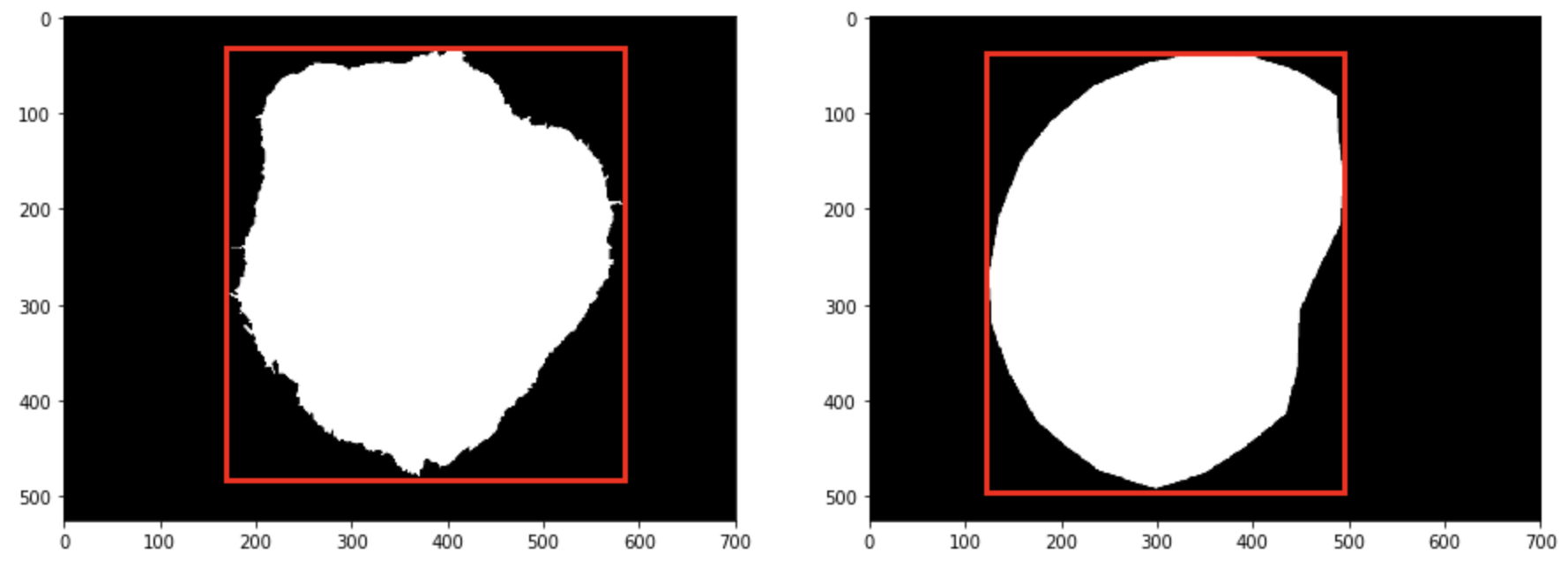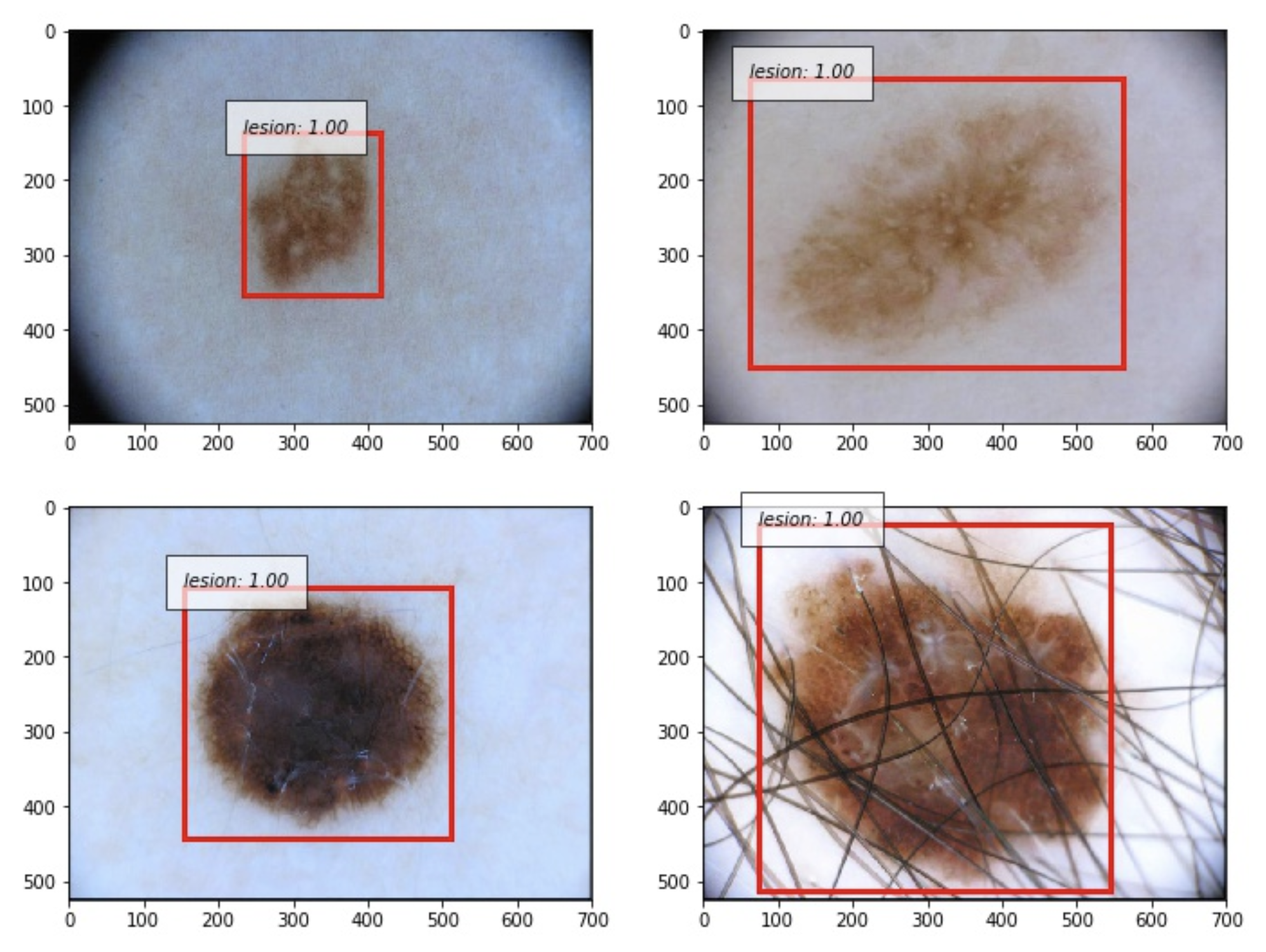Skin Lesion Detector using HAM10000 dataset with Chainer
- Python 3.6
- Chainer 5.0
- ChainerCV 0.11
- cupy-cuda90
- opencv 3.4
$ pip install -r requirements.txt$ docker build -t chainer-skin-lesion-detector .
$ docker run --rm -it -v $(pwd):/chainer-skin-lesion-detector --runtime nvidia --name chainer-skin-lesion-detector-dev chainer-skin-lesion-detector /bin/bash
.
├── data
│ ├── ISIC2018_Task1-2_Training_Input
│ ├── ISIC2018_Task1_Training_GroundTruth
│ ├── preprocessed
│ │ ├── ground_truth
│ │ └── input
│ └── xml
└── src
├── models
│
├── notebooks
│
├── result
└── util
- Download training dataset and ground truth data from Task 1: Training | ISIC 2018 to
data/directory
- Re-scale image and ground truth
- Make bounding box from ground truth of segmentation image
- Create VOC format based label to
data/xmldirectory
$ python make_dataset.py --loaderjob 4An example of annotation data with a bounding box from the ground truth of segmentation using ISIC2018 task1 dataset:
- You can specify model, number of batch size, number of epoch, GPU ID and number of parallel data loading process.
$ python main.py --model ssd300 --batchsize 32 --epoch 30 --gpu 0 --loaderjob 4
- Tschandl, Philipp, Cliff Rosendahl, and Harald Kittler. "The HAM10000 Dataset: A Large Collection of Multi-Source Dermatoscopic Images of Common Pigmented Skin Lesions." arXiv preprint arXiv:1803.10417 (2018).
- Liu, Wei and Anguelov, Dragomir and Erhan, Dumitru and Szegedy, Christian and Reed, Scott and Fu, Cheng-Yang and Berg, Alexander C. "SSD: Single shot multibox detector." 14th European Conference on Computer Vision, ECCV 2016. Springer Verlag, 2016.


